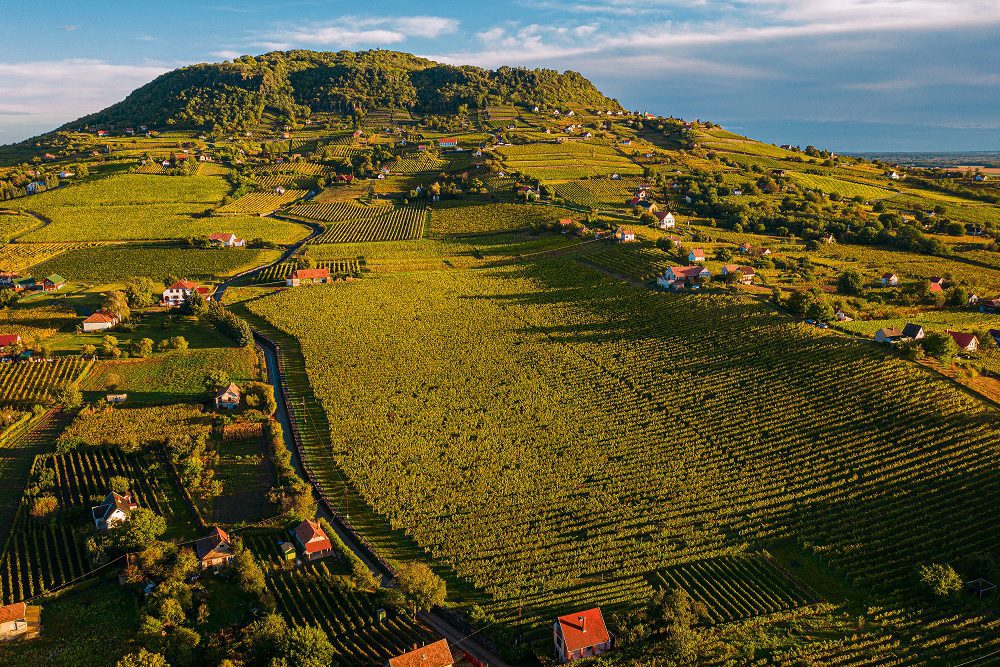New products
Showing all 21 results
Showing all 21 results

Somló was established more than hundred years ago, when King Stephen I founded the Benedictine convent in Torna in 1010; this also boasted a vineyard. It is located in the middle of Transdanubia, between Pápa and Sümeg, on the eastern border of the Kisalföld. Only part of this area, less than 531 hectares, is currently under vine, however these plots are the best, majority of them are Cru sites. Two types of soil cover were formed over the older rocks. On the “skirt” of the hill, basalt debris loess formed above the Pannonian sand and clay lake sediments, while, higher up the slope above the basalt layer, there is basalt slope debris and volcanic tuff debris (iron clay and black erubase soil). The latter soil in particular yields the best wines, which is also complemented by a favourable angle of irradiation on the steep slopes. Moreover, vines are largely cultivated on terraces on this part of the slope due to its steepness. The calcium and trace element content of the foothill’s soil is also fortunately enriched by basalt residue which has slid down the slope and mixed with the sediment. One of the best soils is the so-called “corn stone” weathered basalt debris. This soil, rich in basic volcanic materials, plays an extremely important role in the development of the characteristically mineral taste of Somló along with its oxidative fermentation and maturation.The climate is temperate continental. Average annual sunlight hours are 1,950-2,000. The average annual temperature is 9.8°C, while precipitation is 700-700 mm. The hill’s southern side benefits from high levels of heat and radiation, making frost damage rare. As the microclimate of such a small area is relatively balanced, vines can be cultivated successfully on all sides of Somló Hill, even on the northern slopes. Nowadays, the wine district produces almost exclusively white wine. Here, the wine is always more about the terroir of Somló than the grape variety. Somló wines have a unique flavour profile thanks to the soils and the typical oak ageing. This is characterised by salty, flinty, mineral notes as well as intense flavours due to oak ageing. The use of new barrique is not widespread, although wines do not really need this due to their fine acidity. However, it is worth laying these wines down for a while, as they only really start to reveal themselves after two years or so. The distinctive, high-quality acidity is not dependent on variety, the Somló acidity is just as present in Olaszrizling as in Traminer. Raisined or botrytised grapes also often end up in the wines, making them especially multi-layered and densely textured. Somló wines have great ageability.